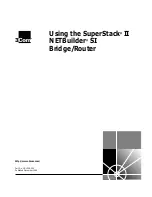
EN - T18S/R14
-23-
CAUTION:
To avoid personal injury and/or
damage to finished work, always allow the power unit
to come to a COMPLETE STOP before putting the tool
down.
Variable Speed Control Dial
- (Fig. 19)
The speed at which the cutter is fed into the wood must
not be too fast that the motor slows down, or too slow
that the cutter leaves burn marks on the face of the
wood. Practice judging the speed by listening to the
sound of the motor when routing.
• The rotation speed of the tool can be changed by
turning the variable speed dial. The table below shows
the number on the dial and the corresponding rotation
speed.
NOTE:
If the tool is operated continuously at low speed
for a long time, the motor will get over-loaded, resulting
in tool malfunction.
NOTE:
When changing the speed dial from “6” to “1”,
turn the dial clockwise. Do not turn the dial clockwise
forcibly.
NOTE:
Make several light passes instead of one heavy
pass for better quality work.
Speed Selection Chart
No.
Speed
1
10,000 Min-1
2
14,000 Min-1
3
18,000 Min-1
4
22,000 Min-1
5
26,000 Min-1
6
30,000 Min-1
mm
1-24
30,000 (6)
max
rpm
24-30
22,000 (4)
30-38
18,000 (3)
Generally, use the lower settings for large diameter
cutters and the higher settings for small diameter cutters.
The correct setting will also depend on the density of
the material, depth of cut and feed speed of the router,
as severe loss of rpm denotes motor overload. In most
cases the slowest speed required for large cutters with
(>=35mm) smaller shank sizes is 14,000 Min-1.
Electronic Function
The tool is equipped with the electronic functions for
easy operation.
• Constant speed control - The speed control function
provides the constant rotation speed regardless of load
conditions.
• Soft start feature - The soft-start function minimizes
start-up shock, and makes the tool start smoothly.
Direction of Feed - (Fig. 20)
WARNING:
The direction of routing
must always be opposite to the cutter’s direction
of rotation, otherwise there is a risk of kick-
back.
.
When routing along an edge, the direction of the router
travel should be against that of the rotation of the cutter.
This will create the correct cutting action and prevent the
cutter ‘snatching’. It will also pull the router towards the
workpiece and hence the side-fence or guide bearing will
be less likely to wander from the edge of the workpiece.
Installing or Removing the Dust
Spout on the Plunge Base - (Fig. 21)
• While holding the tool, attach dust extraction spout
into the plunge base.
• Tighten the fixing knob.
• Connect to a suitable dust extractor via the dust
extractor dust hose and a power tool adaptor.
• To remove dust spout from the plunge base unscrew
fixing knob and remove dust spout.
Installing or Removing Dust
Spout to Trim Base - (Fig. 22)
• While holding the tool, attach dust extraction spout
onto the trim base, ensure pin engages in the hole.
• Use trim base dust spout knob to secure by tightening
the knob clockwise.
• Connect to a suitable dust extractor via the dust
extractor dust hose and a power tool adaptor.
• To remove dust spout from the trim base unscrew the
trim base dust spout knob anti-clockwise and remove
dust spout.
Work Lights
CAUTION:
Do not look in the light or see
the source of light directly.
Summary of Contents for T18S/R14
Page 6: ...T18S R14 6 1 2 1 2 Fig 12 Fig 13a Fig 13b Fig 14 Fig 13 Fig 13c...
Page 7: ...T18S R14 7 M6 115mm 15mm 1 2 figure 18 1 Fig 15 Fig 20 Fig 20a Fig 17 Fig 18 Fig 19 Fig 16...
Page 8: ...T18S R14 8 2 2 1 figure22 1 2 Fig 20c Fig 20b Fig 21 Fig 22 1 2 3 4...
Page 10: ...T18S R14 10 figure26b Fig 26b Fig 27...
















































